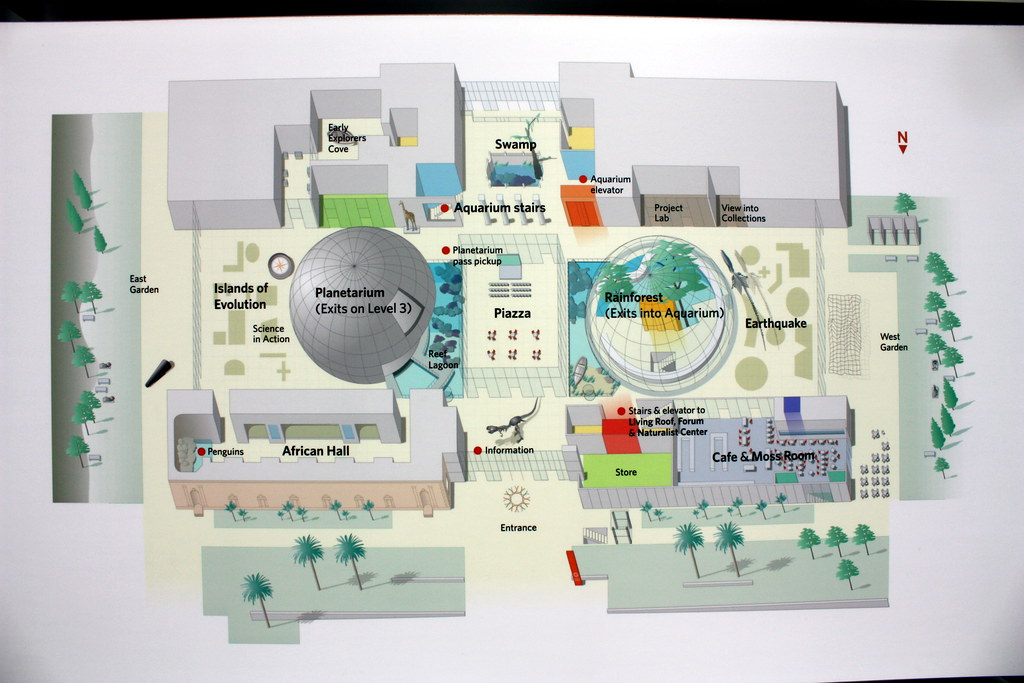
Map of museum
In the context of this course, the museum is an excellent example of the interconnection between science and art. The museum is envisioned as a center for scientific education, with detailed exhibits that explain not only what is there, but why it is there. Each animal exhibit has a description of the animal's locale, living habits, and particular traits that help it survive and thrive in its environment. That said, the excellent educational text is enhanced by the artistic layout and design of the exhibits. My favorite part of the museum has always been the rainforest dome - a huge, three story tall transparent dome that encloses a recreation of an actual rainforest, complete with birds, insects, and other animals that are free to fly around rather than being confined to cages and tanks. The concept is unique because visitors can fully immerse themselves in the rainforest environment, which lends itself to a whole new level of experience beyond your typical museum that just lets you watch from a distance.

Picture of me with museum guides outside the rainforest exhibit
One other smaller exhibit that stood out to me in a different sense was the Foucault Pendulum, a large swinging pendulum hung from an installation in the ceiling that aimed to demonstrate the effects of the Earth's rotation as it changes the path of its movement to gradually knock down colored pegs. The beauty of its construction is captivating, and also rewarding of patience - a peg is knocked down only once every 33 minutes, but the swinging of the pendulum drawing ever closer to the next peg is as soothing as it is a fascinating display of the motion of the Earth.

The Foucault Pendulum
Sources
Image 1 - Bouknight, Ray. "Map of Main Floor, California Academy of Sciences." Flickr. Yahoo!, 10 November 2014. Web. 06 June 2016.
Image 2 - Self taken
Image 3 - Self taken
Braginsky, Vladimir B., Aleksander G. Polnarev, and Kip S. Thorne. "Foucault Pendulum at the South Pole: Proposal For an Experiment to Detect the Earth's General Relativistic Gravitomagnetic Field." Phys. Rev. Lett. Physical Review Letters 53.9 (1984): 863-66. Web.
"California Academy of Sciences." California Academy of Sciences. N.p., n.d. Web. 06 June 2016.
Calacademy. "The Foucault Pendulum." California Academy of Sciences. N.p., n.d. Web. 06 June 2016.
Krane, Kenneth S. "The Pendulum: A Case Study in Physics." Phys. Today Physics Today 59.7 (2006): 52-53. Web.
"Foucault Pendulum." Wikipedia. Wikimedia Foundation, n.d. Web. 06 June 2016.
No comments:
Post a Comment